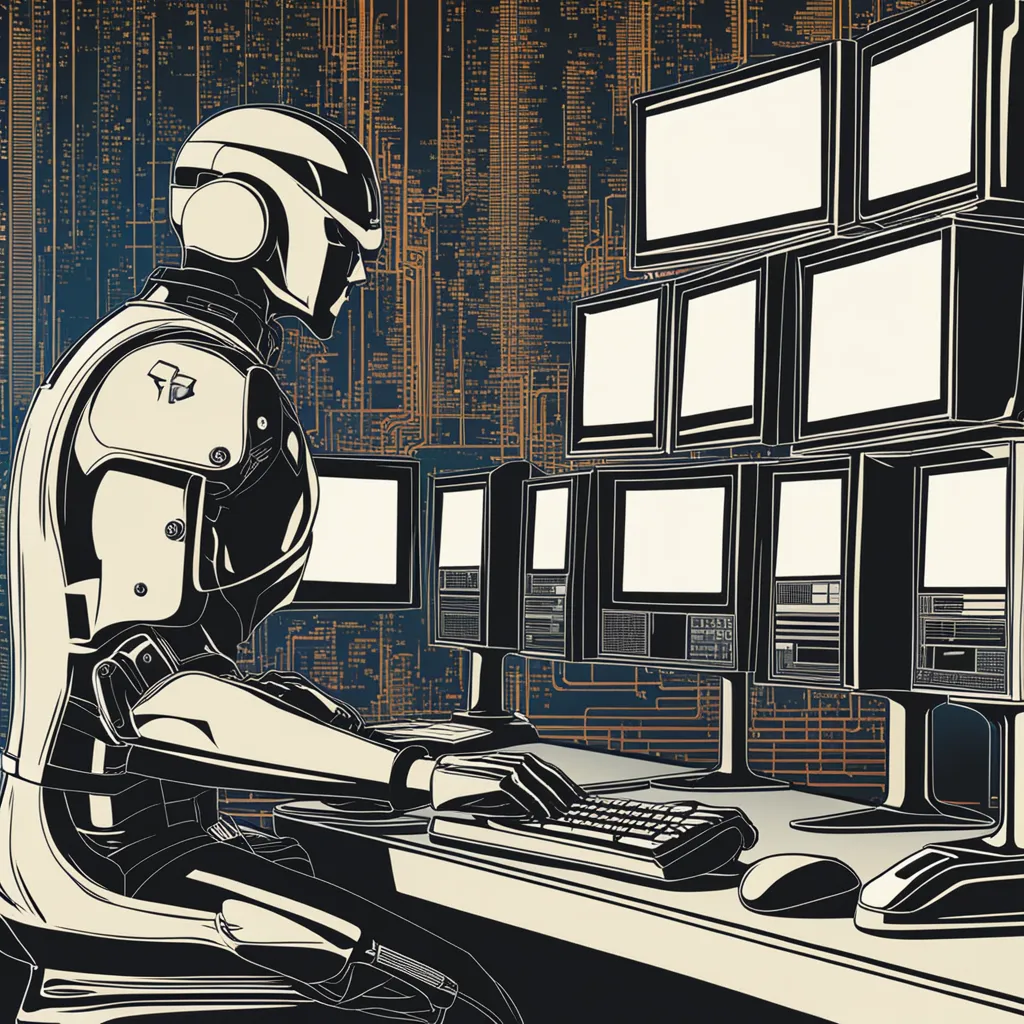The Future of Human-Computer Interaction: Beyond Screens and Keyboards
Human-computer interaction (HCI) has undergone remarkable transformations over the years, with constant advancements in technology shaping the way we engage with digital systems. As we look toward the future, the evolution of HCI is poised to transcend traditional interfaces, moving beyond screens and keyboards to create more immersive and intuitive interactions.

1. Rise of Natural User Interfaces (NUI): Natural User Interfaces, such as voice recognition and gesture control, have gained prominence, allowing users to interact with devices in a more intuitive and human-like manner. Voice-activated virtual assistants, like Siri and Alexa, are just the beginning, paving the way for a future where our interactions with computers mirror natural conversations.
2. Augmented and Virtual Reality Experiences: The integration of augmented reality (AR) and virtual reality (VR) technologies is redefining HCI by immersing users in digital environments. AR overlays digital information onto the real world, enhancing our perception, while VR creates entirely immersive digital spaces. These technologies open new possibilities for education, gaming, and collaborative work experiences.
3. Brain-Computer Interfaces (BCI): BCIs represent a frontier in HCI, allowing direct communication between the human brain and computers. Electroencephalography (EEG) devices and neural implants enable users to control devices or applications through their thoughts. While still in the early stages, BCIs hold the potential to revolutionize accessibility and communication for individuals with disabilities.
4. Haptic Feedback and Tactile Interfaces: The sense of touch is a crucial aspect of human interaction, and future HCI designs are incorporating haptic feedback and tactile interfaces to enhance user experiences. Haptic technology simulates the sense of touch, providing physical feedback in response to digital interactions. This technology is particularly promising in fields like gaming, virtual surgery simulations, and remote robotic control.
5. Emotion-Aware Computing: As computers become more sophisticated in understanding human emotions, future HCI systems will adapt based on users' emotional states. Emotion-aware computing utilizes facial recognition, voice analysis, and physiological sensors to gauge emotions and tailor interactions accordingly. This has implications for personalized user experiences, mental health applications, and virtual communication.
6. Multi-Modal Interaction: Future HCI will embrace multi-modal interaction, combining various input methods for a more holistic experience. This could involve a combination of voice commands, hand gestures, eye tracking, and touch inputs. The goal is to provide users with a flexible and adaptable interface that suits their preferences and the context of use.
7. Context-Aware Computing: Context-aware computing considers the user's environment and adjusts interactions accordingly. Smart devices equipped with sensors can gather information about a user's location, activity, and preferences to provide more relevant and timely assistance. This anticipatory nature of interaction enhances user convenience and efficiency.
8. Machine Learning and Personalization: Machine learning algorithms play a pivotal role in the future of HCI by enabling systems to learn and adapt to individual user behaviors. Personalized interfaces will become the norm, as computers anticipate user preferences, making interactions more efficient and tailored to individual needs.
9. Ethical Considerations in HCI: As HCI continues to advance, ethical considerations become crucial. Issues related to privacy, consent, and bias in algorithmic decision-making must be carefully addressed. Designing HCI systems that respect user autonomy and prioritize ethical principles is paramount for a positive technological future.
10. Collaborative and Social Interfaces: Future HCI will emphasize collaborative and social interfaces, enabling users to interact seamlessly in virtual spaces. This includes collaborative work platforms, social VR experiences, and shared digital environments that foster connection and communication.
Conclusion: The future of human-computer interaction holds exciting possibilities, pushing the boundaries of what we currently conceive as traditional interfaces. From natural user interfaces to immersive virtual experiences, the evolving landscape of HCI is on a trajectory to make technology more intuitive, responsive, and integrated into our daily lives. As we navigate this future, it's essential to consider the ethical implications and ensure that HCI designs prioritize inclusivity, accessibility, and user well-being.







